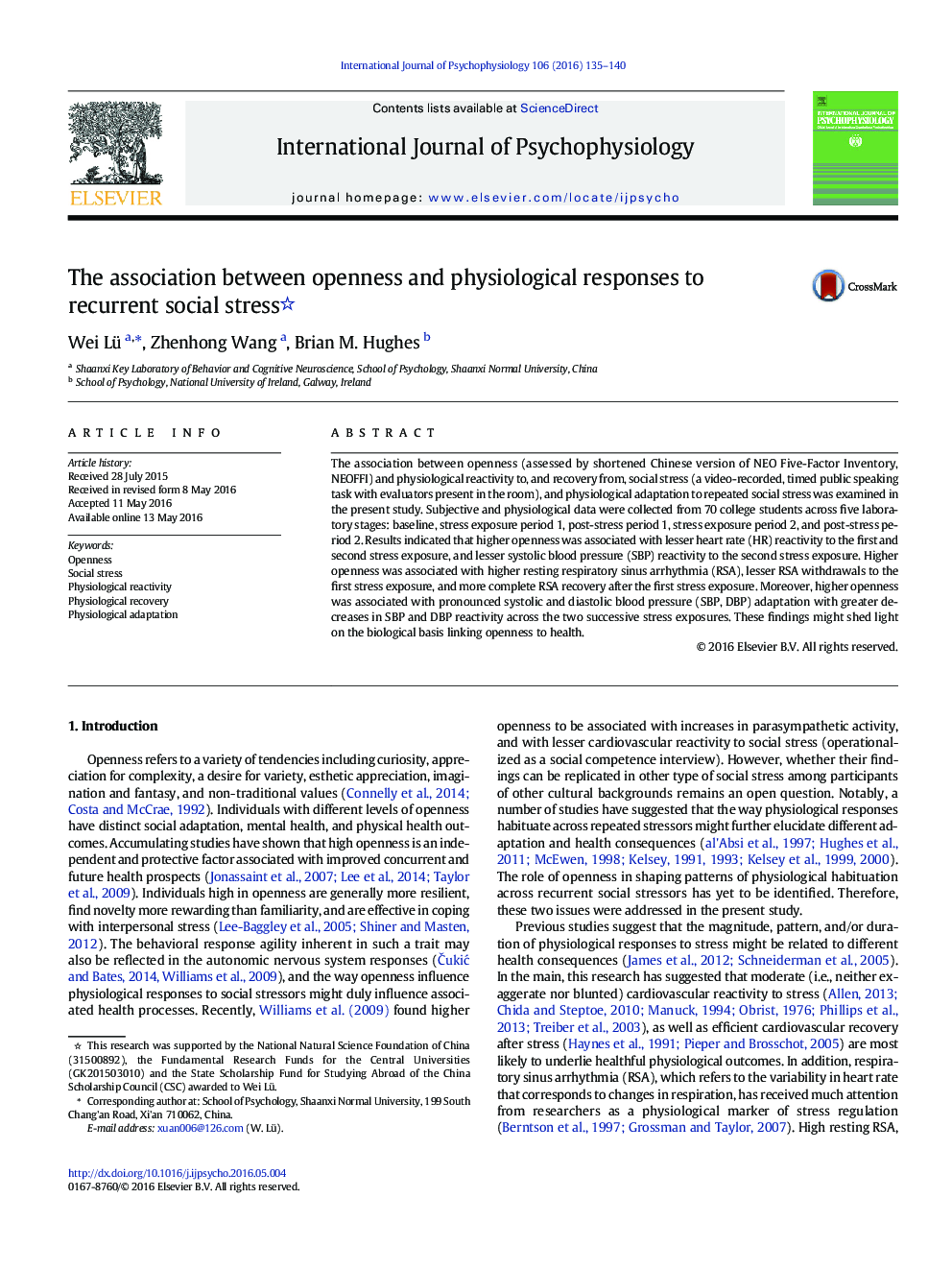| کد مقاله | کد نشریه | سال انتشار | مقاله انگلیسی | نسخه تمام متن |
|---|---|---|---|---|
| 929780 | 1474390 | 2016 | 6 صفحه PDF | دانلود رایگان |
• Openness was related to lesser HR, SBP reactivity to social stress.
• Openness was related to higher basal RSA, lesser RSA withdrawal, better RSA recovery to social stress.
• Openness was positively related to SBP and DBP adaptation to recurrent social stress.
The association between openness (assessed by shortened Chinese version of NEO Five-Factor Inventory, NEOFFI) and physiological reactivity to, and recovery from, social stress (a video-recorded, timed public speaking task with evaluators present in the room), and physiological adaptation to repeated social stress was examined in the present study. Subjective and physiological data were collected from 70 college students across five laboratory stages: baseline, stress exposure period 1, post-stress period 1, stress exposure period 2, and post-stress period 2. Results indicated that higher openness was associated with lesser heart rate (HR) reactivity to the first and second stress exposure, and lesser systolic blood pressure (SBP) reactivity to the second stress exposure. Higher openness was associated with higher resting respiratory sinus arrhythmia (RSA), lesser RSA withdrawals to the first stress exposure, and more complete RSA recovery after the first stress exposure. Moreover, higher openness was associated with pronounced systolic and diastolic blood pressure (SBP, DBP) adaptation with greater decreases in SBP and DBP reactivity across the two successive stress exposures. These findings might shed light on the biological basis linking openness to health.
Journal: International Journal of Psychophysiology - Volume 106, August 2016, Pages 135–140
